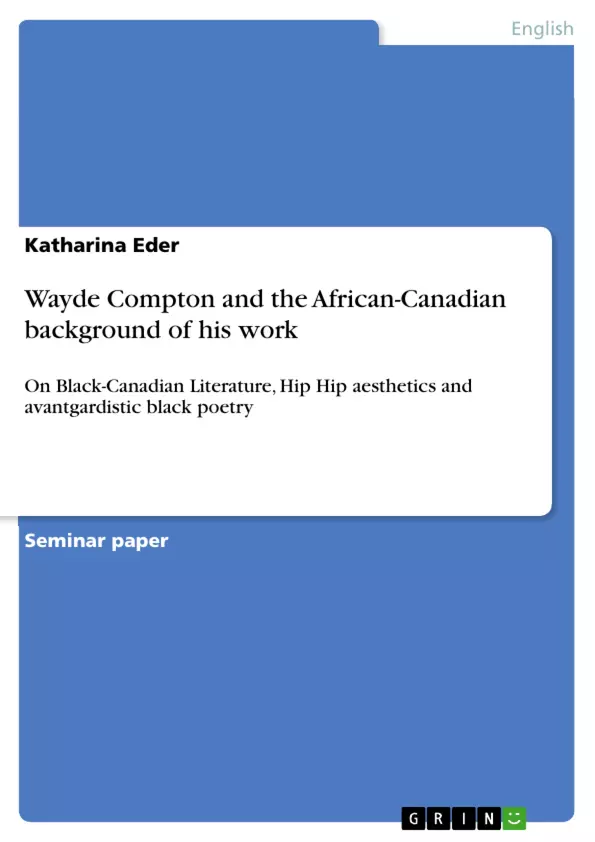The following paper is concerned with the artist Wayde Compton and the African-Canadian background of his work. In the beginning, Compton´s life as well as some insights into the historical and socio-cultural background that characterize the author´s life and his works will be described. A discussion on Compton´s view on topics such as Black Englishes, Hip Hop oralities and Turntable Pluralities follows, after which the paper will provide some information on the poetry collection Performance Bond as well as other works by Wayde Compton. After an explanation concering the field of „Hip Hop aesthetics“ as well as a discussion of Compton´s poem „Declaration of the Halfrican Nation“, the paper concludes with a presentation of „mixed-race“ or „hyphenated“ writers and their work aside from Wayde Compton.
Inhaltsverzeichnis (Table of Contents)
- Wayde Compton and the African-Canadian Background of His Work
- Compton's Life and Background
- Compton's Views on Black Englishes, Hip Hop Oralities and Turntable Pluralities
- Compton's Poetry Collection Performance Bond and Other Works
- Hip Hop Aesthetics
- Compton's Poem "Declaration of the Halfrican Nation"
- Mixed-Race Writers and Their Work
Zielsetzung und Themenschwerpunkte (Objectives and Key Themes)
This paper aims to explore the African-Canadian background of Wayde Compton's work, analyzing his life, influences, and creative output. It investigates Compton's perspective on Black Englishes, Hip Hop oralities, and the role of turntablism in his artistic practice.
- The influence of African-Canadian heritage on Wayde Compton's work
- The role of Hip Hop aesthetics in shaping Compton's poetry and artistic expression
- The exploration of Black Englishes and their connection to oral traditions
- The concept of "turntable pluralities" and its significance in conveying Black cultural memory
- The intersection of race, identity, and artistic practice in Compton's work
Zusammenfassung der Kapitel (Chapter Summaries)
- This chapter provides biographical information about Wayde Compton and discusses the historical and socio-cultural context that shaped his life and work.
- This chapter explores Compton's views on Black Englishes, Hip Hop oralities, and the concept of "turntable pluralities," highlighting their importance in his artistic practice.
- This chapter provides an overview of Compton's poetry collection Performance Bond and other works, examining his themes and artistic style.
- This chapter explores the concept of "Hip Hop aesthetics" and its influence on Compton's poetry, focusing on his poem "Declaration of the Halfrican Nation."
- This chapter discusses the work of other "mixed-race" or "hyphenated" writers, drawing comparisons to Compton's artistic practice and themes.
Schlüsselwörter (Keywords)
This paper focuses on the work of Wayde Compton, examining his engagement with African-Canadian heritage, Hip Hop aesthetics, Black Englishes, "turntable pluralities," and the concept of "mixed-race" or "hyphenated" identity in literature. It explores themes of race, identity, cultural memory, and the intersection of oral and written traditions.
- Citation du texte
- Katharina Eder (Auteur), 2009, Wayde Compton and the African-Canadian background of his work, Munich, GRIN Verlag, https://www.grin.com/document/149772



